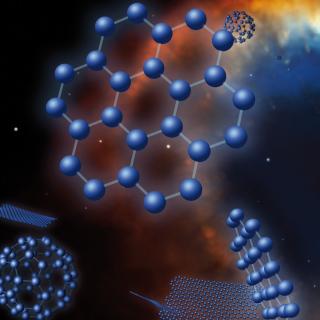Bibcode
Griffith, Emily; Weinberg, David H.; Johnson, Jennifer A.; Beaton, Rachael; García-Hernández, D. A.; Hasselquist, Sten; Holtzman, Jon; Johnson, James W.; Jönsson, Henrik; Lane, Richard R.; Nataf, David M.; Roman-Lopes, Alexandre
Bibliographical reference
The Astrophysical Journal
Advertised on:
3
2021
Journal
Citations
47
Refereed citations
41
Description
We compare abundance ratio trends in a sample of ∼11,000 Milky Way bulge stars (RGC < 3 kpc) from the Apache Point Observatory Galactic Evolution Experiment (APOGEE) to those of APOGEE stars in the Galactic disk (5 kpc < RGC < 11 kpc). We divide each sample into low-Ia (high-[Mg/Fe]) and high-Ia (low-[Mg/Fe]) populations, and in each population, we examine the median trends of [X/Mg] versus [Mg/H] for elements X = Fe, O, Na, Al, Si, P, S, K, Ca, V, Cr, Mn, Co, Ni, Cu, and Ce. To remove small systematic trends of APOGEE abundances with stellar $\mathrm{log}(g)$ , we resample the disk stars to match the $\mathrm{log}(g)$ distributions of the bulge data. After doing so, we find nearly identical median trends for low-Ia disk and bulge stars for all elements. High-Ia trends are similar for most elements, with noticeable (0.05-0.1 dex) differences for Mn, Na, and Co. The close agreement of abundance trends (with typical differences ≲0.03 dex) implies that similar nucleosynthetic processes enriched bulge and disk stars despite the different star formation histories and physical conditions of these regions. For example, we infer that differences in the high-mass slope of the stellar initial mass function between disk and bulge must have been ≲0.30. This agreement, and the generally small scatter about the median sequences, means that one can predict all of a bulge star's APOGEE abundances with good accuracy knowing only its measured [Mg/Fe] and [Mg/H] and the observed trends of disk stars.
Related projects

Nucleosynthesis and molecular processes in the late stages of Stellar Evolution
Low- to intermediate-mass (M < 8 solar masses, Ms) stars represent the majority of stars in the Cosmos. They finish their lives on the Asymptotic Giant Branch (AGB) - just before they form planetary nebulae (PNe) - where they experience complex nucleosynthetic and molecular processes. AGB stars are important contributors to the enrichment of the
Domingo Aníbal
García Hernández